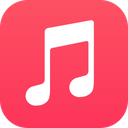
In Concert: From There To Hear
What is multi-dimensional drumming? After dealing with polyrhythms, I began to hear layers of sounds and rhythms. Divided into many parts and facets, the drum set and secondary instruments I use and play are all aspects of the drums. In the future, there will be many changes and developments in the area of the mind – so what we (humankind) think and hear, is what we shall see and hear. In order to play the drum set you must be able to manipulate four or five things at one time (i.e. bass drum, snare drum, high-hat, ride cymbals and maybe voice). So an instruments name and structure doesn’t stop me from playing them like a drum. You have instruments that are structurally different from the drum, but they have the same characteristic in the approach to the drum (i.e. piano, balaphone and shoes with taps). In order to find the music of the drums, I had to change my assumptions and beliefs about music in relation to the drums, which is sound in the creation of multi-rhythms. In the liner notes I will try to explain the music on this CD, from the instruments I am playing, to the structure of the improvisation. The chiramia is a wind instrument. It is played with a double reed. Mine have six stops (some have three, four and two). They are from Mexico. To me, the chiramia is my voice synthesizer. In Mexico, some musicians play it along with their drums. In my performance, I use two, mostly played individually, but sometimes together. Through the years, I have given them names. "Slim" is the name of my chiramia with the harsh sound to it. "Big Mama" is the name I gave to the chiramia with the mellow sound. "Repooc" is the psychic name I’ve given my balaphones, talking drums and cymbals (African), snare drums and tom-toms (American). My bass drum is assigned the name of "OM," and my high-hat's name is "Julio." People who are familiar with my music from the 60’s and 70’s know that I played piano as a secondary instrument. During the period of the Revolutionary Ensemble, I would play the drum set and then go over to the piano. The problem was external duality. When Yamaha and Casio came out with the electronic keyboard and drum synthesizer, it became part of my drum set (i.e. bass drum, snare drum, high-hat, cymbals and electronic tonal rhythmic activator). "Emorej" is the name assigned to my Yamaha. Look at it this way – some musicians give names to their instruments (i.e. B.B. King’s guitar "Lucille"). Or you can look at it another way – a lot of drummers carry and play percussion instruments (i.e. gong, whistles, bongos, etc.). I do the same thing except all of my percussion instruments are synthesized into one instrument. The music on this CD is from live performances at two venues--Roulette and The Knitting Factory--spanning the years 1995-98.


